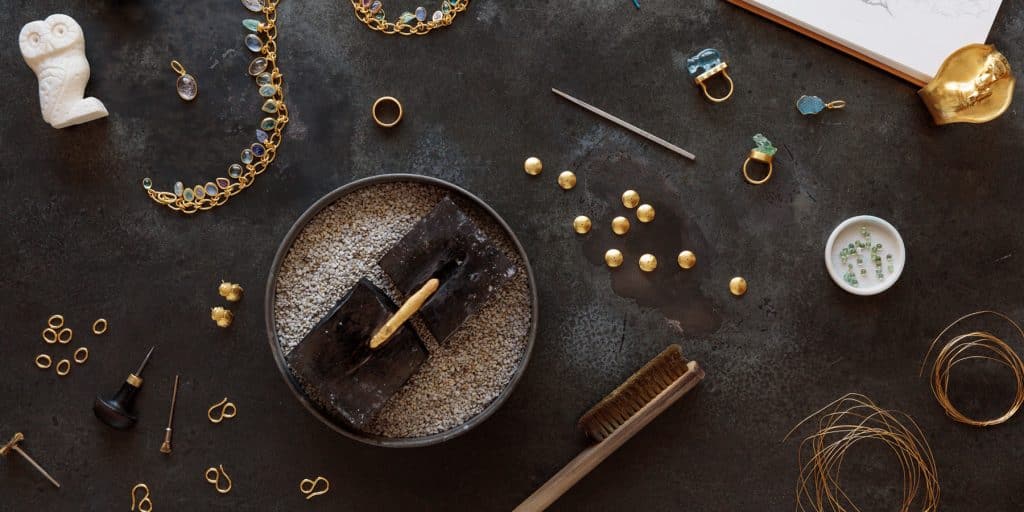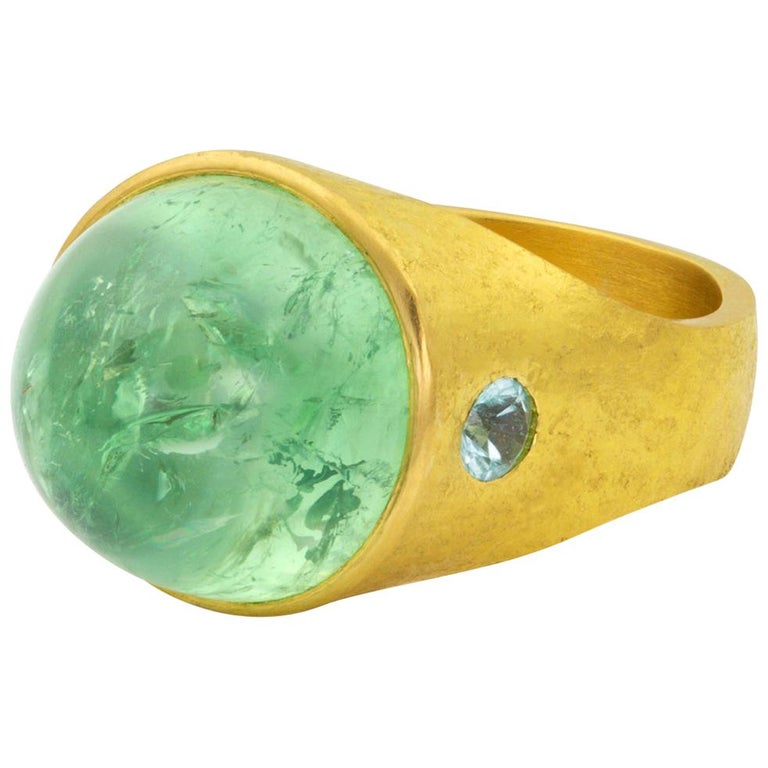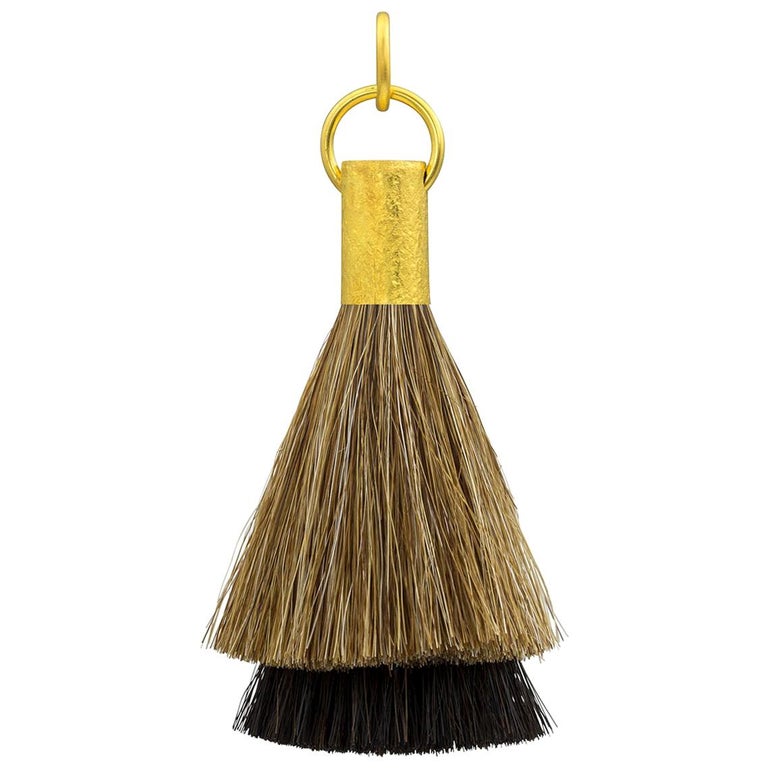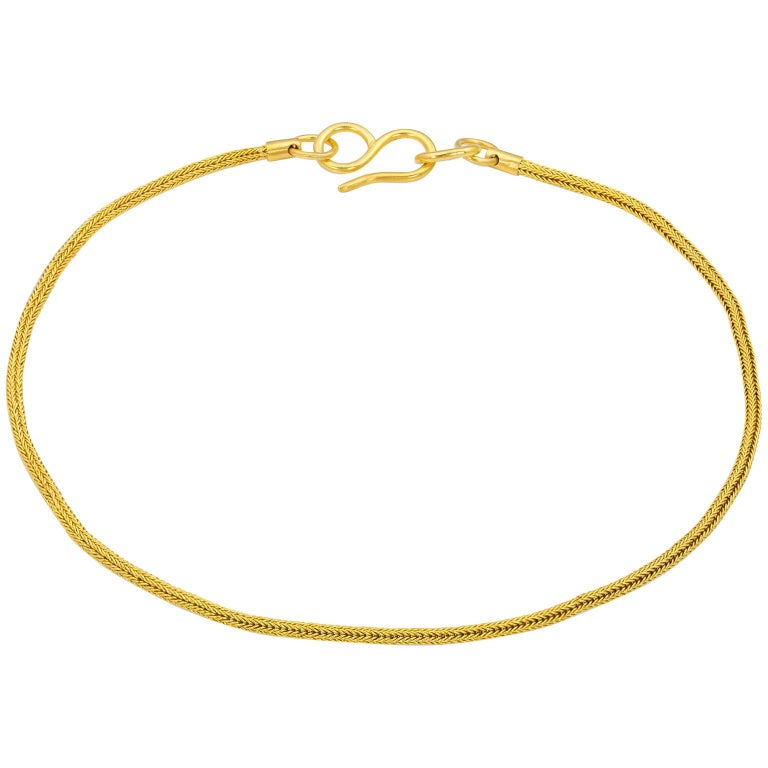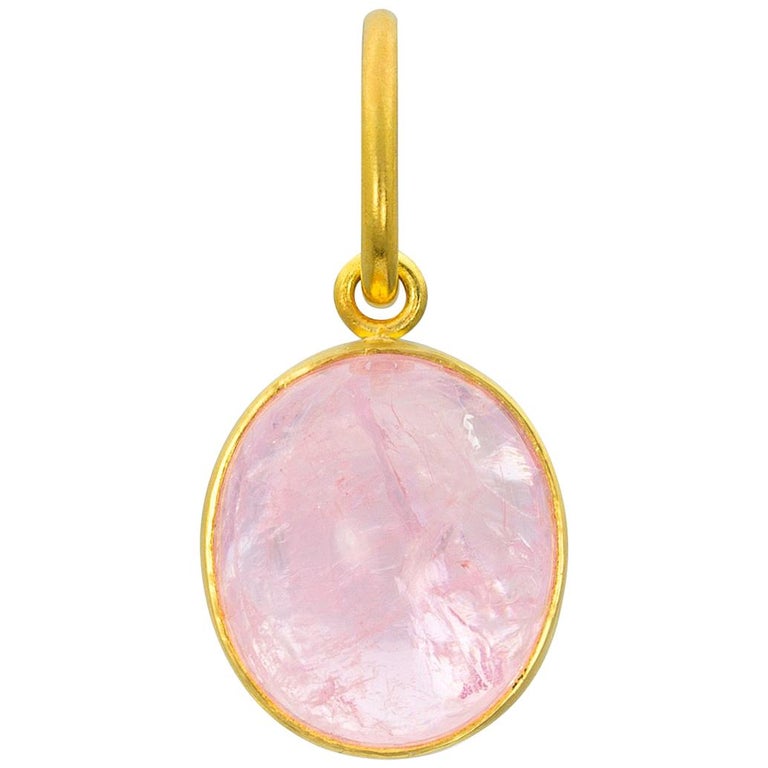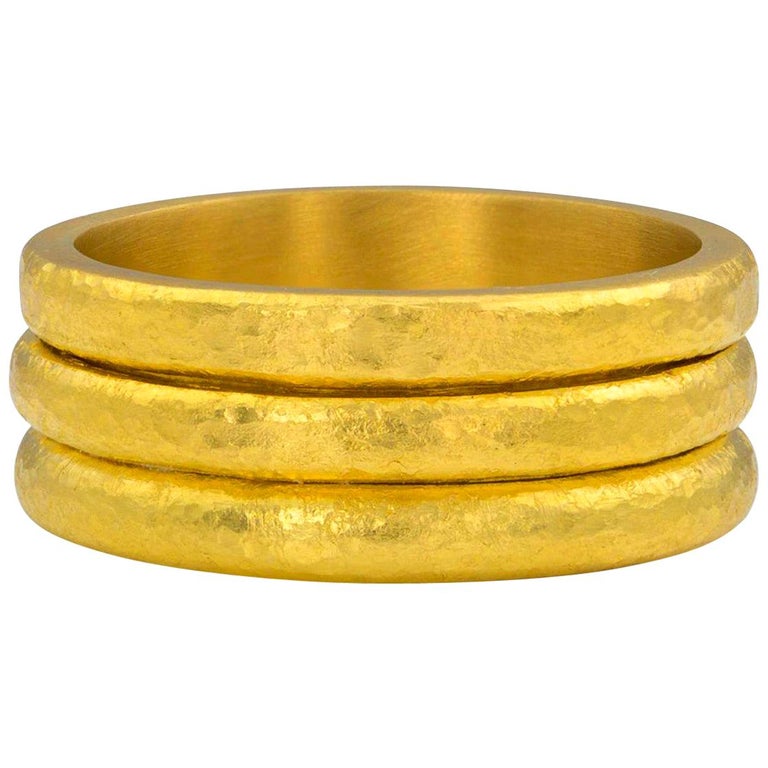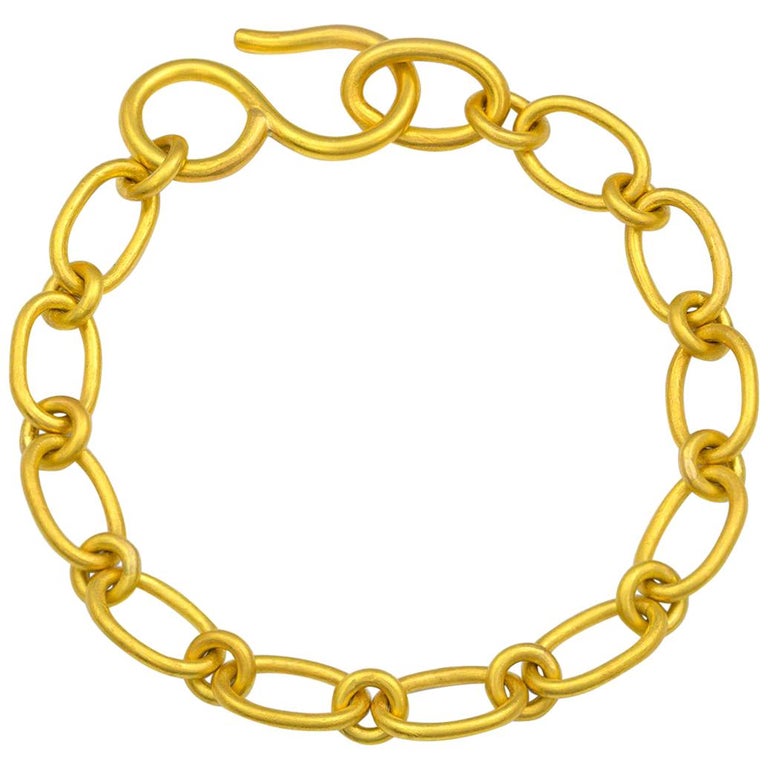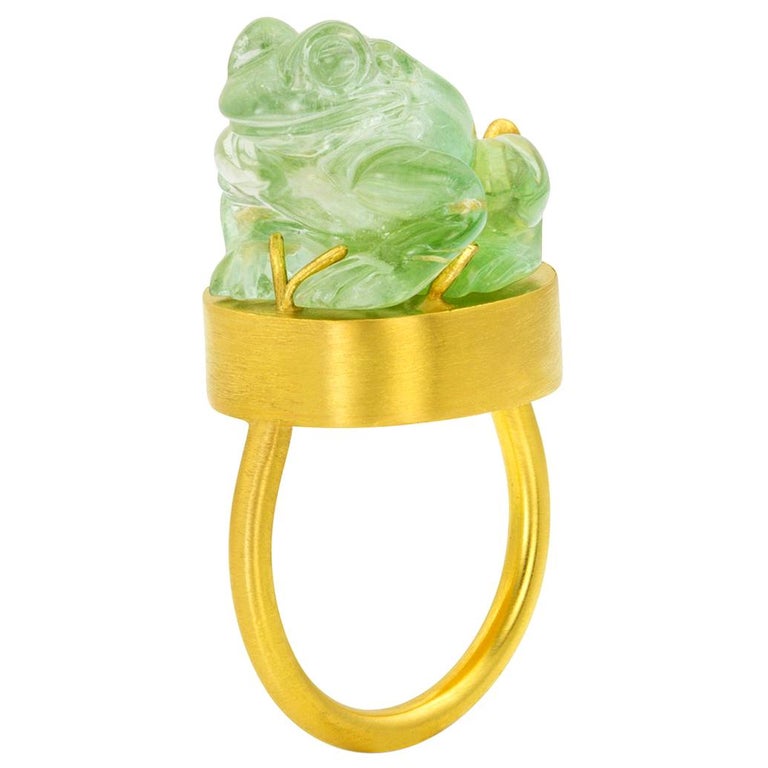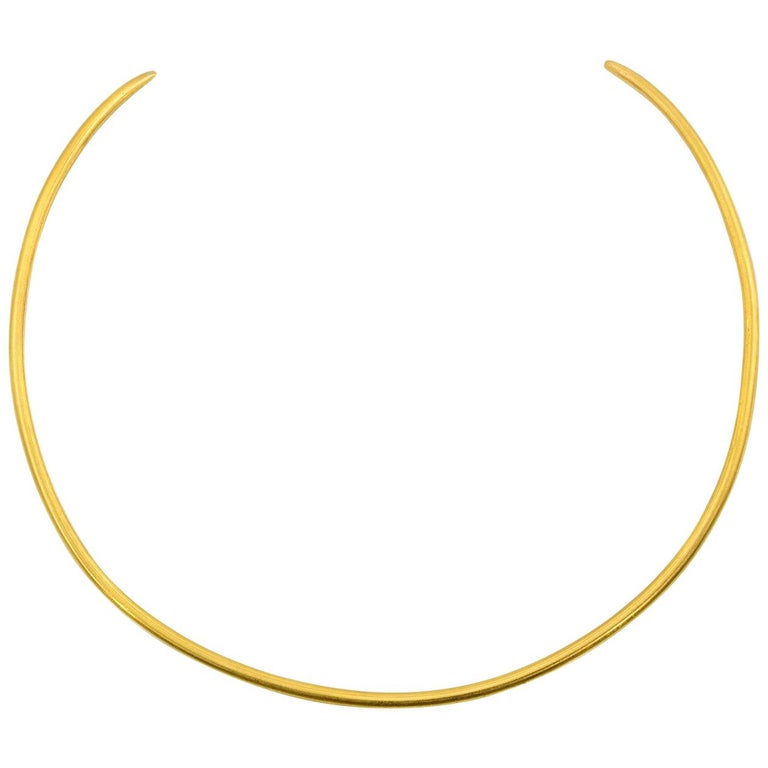
June 16, 2019Loren Teetelli, the designer behind Loren Nicole, had a master lapidary in Idar-Oberstein, Germany, carve the aquamarine hippo of this amulet ring. “The setting features a handmade bezel to fit the platform of the carving and has been accented with tiny bezels that hold paraiba tourmaline melee,” she says. “The whole piece is made, start to finish, by hand.” Photo by Sara Rey Jewelry Photography. Top: Teetelli designs and creates pieces in her Southern California studio. Photography by The Ingalls unless otherwise noted. Styling by Erik Staalberg
There is a disruptive movement among some millennials in the jewelry design world right now. I am not talking about the ones embracing new technologies like 3-D printing or lab-grown diamonds. The real revolutionaries are a small group working at the opposite end of the spectrum. They are making jewelry the old-fashioned way: slowly and by hand. Their inspiration and manufacturing techniques are drawn from ancient times. Many know how to create their jewels on the workbench. One of the most talented among this new wave of jewelry geniuses is Loren Teetelli, of Loren Nicole.
The 29-year-old, who is based in Los Angeles, started designing jewelry after an Indiana Jones–style academic experience. Teetelli studied art history and anthropology at the University of Vermont with a focus on pre-Columbian art. She went on numerous digs in Central and South America and attended field school in Peru. After graduating, she scored an internship as an archeological lab technician at the American Museum of Natural History, in New York, going on to work in the objects conservation lab of the museum’s Anthropology department. This was followed by a stint at the Metropolitan Museum of Art as a conservator for ancient and ethnographic textiles in the Americas, Oceania and Africa Collections department.

This selection of Loren Nicole pieces includes items from the firm’s permanent collection, as well as amulet rings and pendants from its new line, Nebu: Sands of Gold. The stones used include aquamarines, rock crystal, mandarin garnets, yellow beryls, tourmalines and chalcedonies.

Here, Teetelli works on an In The Nile bracelet, completing the last step in the creation of all Loren Nicole jewelry. “Instead of a high-polish finish, I like to use a brass brush to give just a little bit of shine,” she says. This piece, made of 22-karat yellow gold, sapphires and moonstones, is part of a series of one-of-kind bracelets in the Nebu collection called Dangerous Creatures, which she will make throughout the year,
During her college days and early career, Teetelli studied craft as a natural form of relaxation, although to mere mortals, it sounds like serious work. “I didn’t want to just study ancient cultures,” she explains. “I wanted to understand how things were made thousands of years ago.” In Vermont, she learned how to spin wool into fabric. After moving to the New York City area, she began taking jewelry-making classes to learn the techniques she saw exemplified in the Met’s collection of ancient gold accessories. Among the master craftspeople she trained with were Frederika Kulicke and Jeanette Caines, at the Jewelry Arts school in Manhattan. From master goldsmith Kent Raible, she gained a deeper knowledge of granulation, and from jeweler Davide Bigazzi an expertise in techniques like chasing and repoussé.
Finally, the time came for Teetelli to leave the museum — and New York City — behind. “I decided to make jewelry my full-time job and move to Southern California, where I didn’t know anyone but believed the quality of life would be better,” she says. Her father helped her buy studio equipment, and in August 2016, she launched the Loren Nicole collection.

Teetelli heats a whole piece to solder elements of the design into place.

“I didn’t want to just study ancient cultures, I wanted to understand how things were made thousands of years ago,” Teetelli says. She took classes with master craftspeople to learn the proper techniques, and she exclusively uses 22-karat yellow gold, which is close to what ancient artisans employed.
One core category in the collection is gold chain necklaces and bracelets. Several not only exactly mirror the style of pieces you can see at the Met but are also crafted in precisely the same way. “It’s very meditative to make them,” says Teetelli. “The layout of patterns I learned about in textiles helps me stack up the thousands of individual links in the design.”
Making classic loop-in-loop chains is a complex process. It involves wrapping gold wire around a rod to form a coil, then cutting this into open circles that are closed with pliers and given a whisk of the torch to seal the ends into links, popularly called jump rings. Teetelli has to create around 2,000 jump rings for an 18-inch necklace. Next, she uses pliers to shape each link into a bowtie and heats all the parts to soften the gold. Once the links are malleable, she uses a very fine scribe tool to weave the rings into the necklace, opening each link once it has passed through the one or ones below it. The final step is to make the necklace symmetrical by pulling it over a wooden draw plate, which will push any little wires into place and stretch the chain slightly.
Another nod to the classical world in Teetelli’s work is her exclusive use of 22-karat yellow gold. “The ancients used a lot of different alloys,” says Teetelli. “Mine is very close to what they used.” The weighty, high-karat metal make the pieces feel as substantial as the craftsmanship behind them. “People’s faces change when they pick up the jewelry,” says Teetelli. “They can feel the quality.”

“I am refining any unwanted imperfections or marks with a file,” Teetelli says, describing her work on these pieces, which will become a pair of scarab earrings.
Her newest collection, Nebu: Sands of Gold, is inspired by the stories and motifs of ancient Egypt. The pieces embody Teetelli’s interpretation of antiquity more closely than anything she has done previously. At the center of the collection is a series of amulet rings. Each is set with a gem carved by craftsmen in Idar-Oberstein, Germany, in the shape of an animal representing an Egyptian deity, based on Teetelli’s drawings or images of ancient sculptures and faience figures. The carvers achieve an absolutely remarkable level of detail in working these stones, which include tourmaline, obsidian and aquamarine, their diverse colors bringing a vibrancy to the work.

Loren Nicole chain pieces, from left: Roman chain, multistrand mini Grecian bracelet, solid gold bead necklace, cable chain necklace and ancient Greek chain necklace. Photo by Sara Rey Jewelry Photography
One of the most charming pieces in the collection is the hippo amulet ring, depicting an animal associated with the mother goddess Tawaret. Teetelli modeled her beautiful carved creature after the beloved Egyptian faience hippopotamus, nicknamed William, in the Met collection, thus in a sense bringing her career full circle. She has also revived interest in the ancient world and an old-fashioned way of doing things. In this digital age when it seems like there is an unrelenting desire to march forward to the future, Teetelli’s work stands out as something really special.
